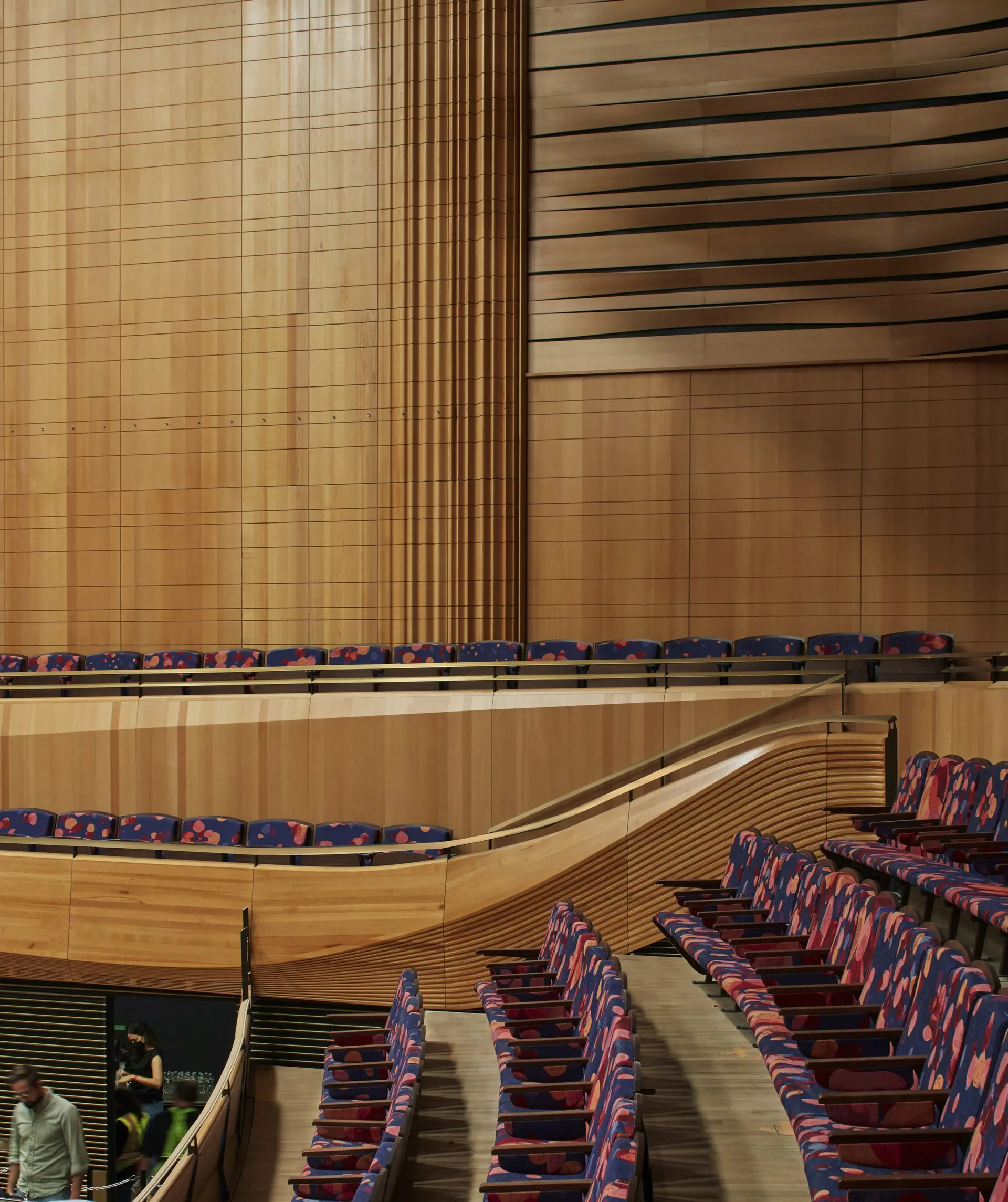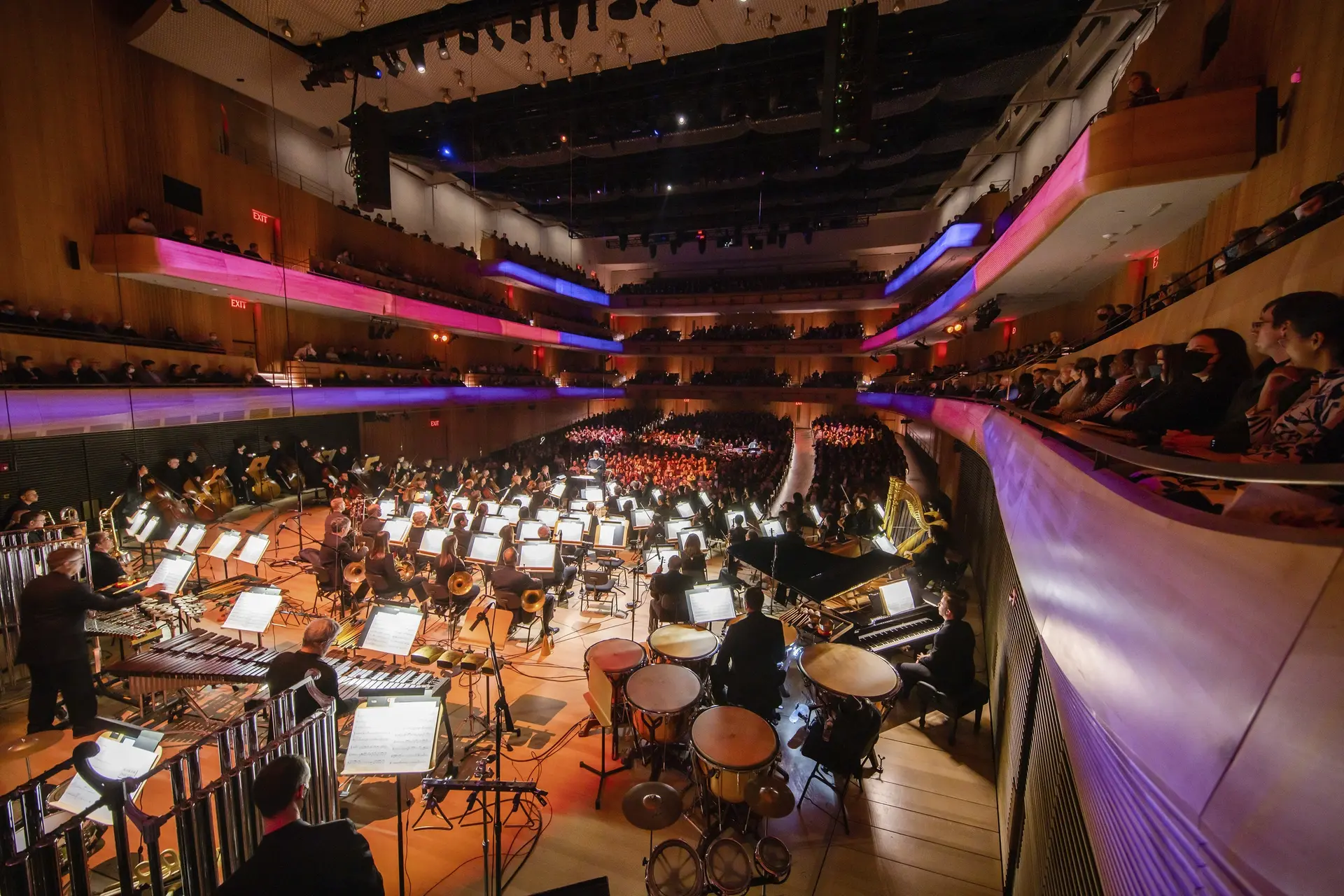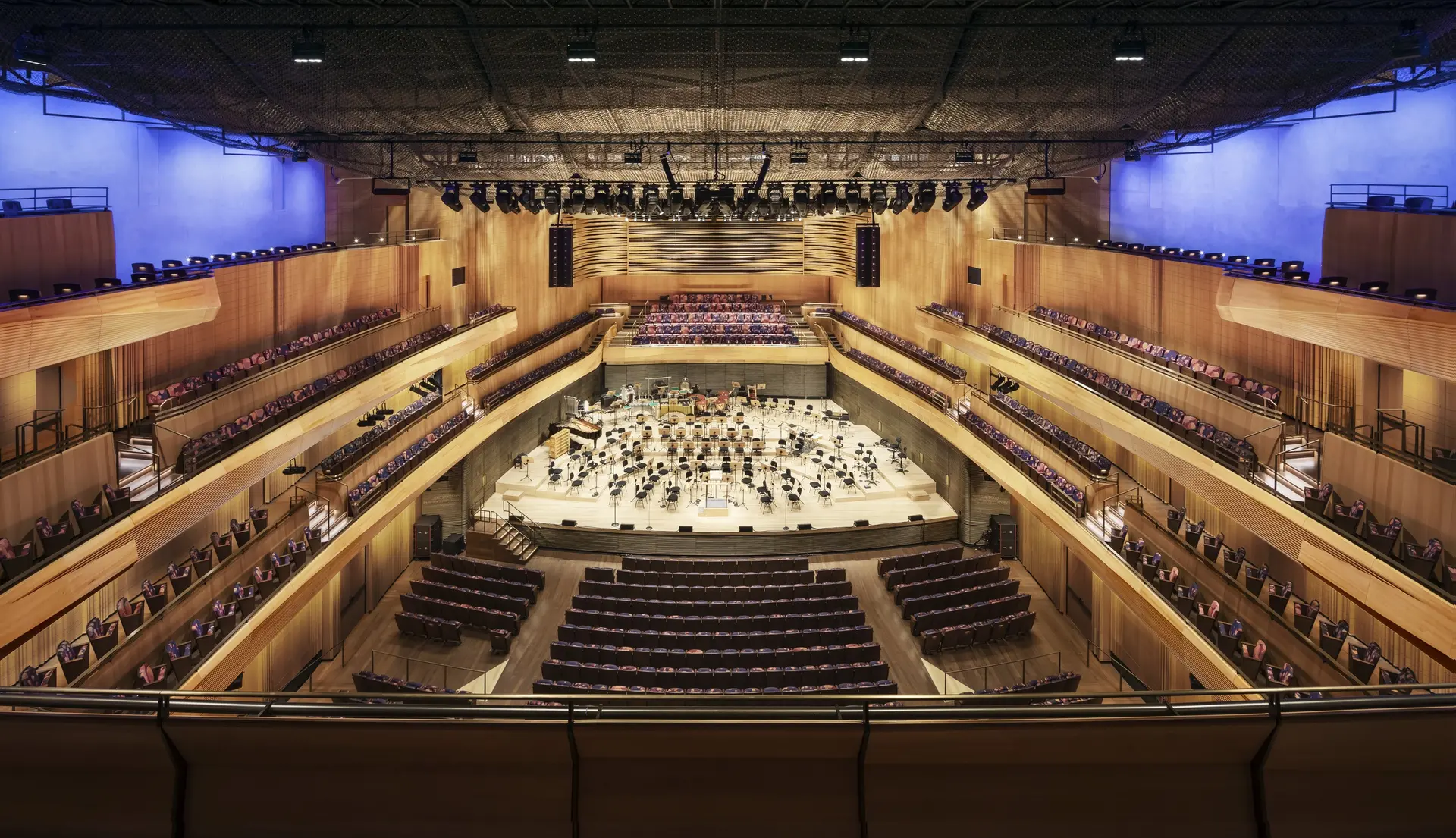
David Geffen Hall
Civic Trust Awards Citation
David Geffen Hall at Lincoln Center, originally designed by Max Abramovitz in 1962, has undergone a transformative renovation, emerging as more than just a music hall but a cultural landmark.
The recent redesign, completed ahead of schedule and on budget, has created an inviting, comfortable, and adaptable space, fostering a connection between the audience and performers. The design prioritised resolving longstanding acoustical challenges, resulting in a state-of-the-art concert hall with flawless acoustics and optimized sightlines. The hall's seating was reduced to 2,200, enhancing access to sound and creating a more intimate experience for concertgoers.
A phased construction plan was initially developed to minimize disruptions to the New York Philharmonic's performances. However, the unexpected challenges of the COVID-19 pandemic prompted the leadership at the Philharmonic and Lincoln Center to seize the opportunity to accelerate the renovation, demonstrating resilience and commitment to enhancing the cultural life of NYC during challenging times. The redesign also focused on improving accessibility and community impact. The main lobby, now envisioned as a living room for New York City, doubled in size by removing extraneous ticket booths. The relocation of escalators created space for a Welcome Center and Restaurant on the ground floor, expanding amenities for the community. Additionally, a Sidewalk Studio on the northeast corner serves as a visible performance space at street level, fostering a connection with passersby on Broadway.
The success of the refurbishment lies in its ability to make exceptional arts and culture accessible to all. The building's shell has been retained, but layout changes and acoustical improvements have enhanced the visitor experience for all. The Lincoln Center Campus now boasts a versatile and flexible space that accommodates a variety of cultural events, both indoors and outdoors.
Judges’ Comments: “The redesigned David Geffen Hall stands as a civic project that goes beyond its role as a music venue, breathing new life into the cultural heart of New York City.”




















Photography Credits & Captions
David-Geffen-Hall-01.jpg, Credit: Michael Moran, Caption: David Geffen Hall, home to New Yorks Philharmonic, at Lincoln Center is more than a music hall. It's a cultural landmark. David-Geffen-Hall-02.jpg, Credit: Michael Moran, Caption: Designed originally by Max Abramovitz in 1962, the hall has gone under multiple renovations over the decades attempting to address the acoustical challenges. The new Wu Tsai Theater transforms the existing concert hall from a cavernous rectilinear shoebox into a curvilinear unified room with flawless acoustics and optimized sight lines that foster an intimate connection between audience and performers. David-Geffen-Hall-03.jpg, Credit: Michael Moran, Caption: The project emits a new life with finishes and furnishings of vivid colors, patterns, and textures mirroring the spirit and vibrancy of performance. David-Geffen-Hall-04.jpg, Credit: Taylor Knoche, Caption: Entering the building, a new large Renlita garage door, draws visitors in from Josie Robinson Plaza and Lincoln Center's iconic fountain. The lobby is an extension of the plaza, open to the public during the day, and during performances. David-Geffen-Hall-05.jpg, Credit: Michael Moran, Caption: By removing extraneous ticket booths at the entrance, the square footage of the lobby more than doubled. Visitors are welcomed by a 50 media wall, offering free live simulcast concerts at night. David-Geffen-Hall-06.jpg, Credit: Michael Moran, Caption: What was once a space littered with makeshift furniture in stanchions now has a restaurant, TATIANA flanking the western edge of the lobby. A bar outside services the Lobby during the day and during simulcast performances. The Lobby is open every day, with concessions, comfortable seating, free WiFi and tables for the publics use. David-Geffen-Hall-07.jpg, Credit: Michael Moran, Caption: On the northeast corner, a newly introduced Sidewalk Studio acts as a living billboard for Lincoln Center and the Philharmonics programming. David-Geffen-Hall-08.jpg, Credit: Michael Moran, Caption: The Sidewalk Studio functions as an intimate, yet highly visible performance space with embedded technical equipment to accommodate musical performances, screenings, lectures, community meetings - all at street level. David-Geffen-Hall-09.jpg, Credit: Michael Moran, Caption: Exterior terrace on the second floor adjacent to the Grand Promenade. David-Geffen-Hall-10.jpg, Credit: Michael Moran, Caption: Stairwells were relocated to allow for more openness to the Grande Promenade, and generous landings to see and be seen. A non-repeating custom fabric wall treatment, inspired by the Pantheon at Pentecost, evokes falling flower petals on each concert level tier. This motif is continued on the seats in the concert hall. David-Geffen-Hall-11.jpg, Credit: Michael Moran, Caption: The materials of the public spaces continue into the concert hall, where a warm wood interior draws you into a dramatic new performance space. The interplay of wood and metal evoke musical instruments and syncopate throughout. David-Geffen-Hall-12.jpg, Credit: Michael Moran, Caption: By relocating the stage forward by 25 feet and eliminating the proscenium, the seating wraps around the stage and brings the entire audience closer to the performers. David-Geffen-Hall-13.jpg, Credit: Chris Lee, Caption: Flexibility - Supported by its new infrastructure, the hall is a flexible performance space that is readily adaptable for a wide range of stage and seating configurations, including orchestra, solo performances, film, pop concerts, and staged opera. The Hall can be reconfigured for various concert formats, with help from 20 motorized lifts and risers that can be rearranged. David-Geffen-Hall-14.jpg, Credit: Chris Lee, Caption: Flexibility - NY Philharmonic Jurassic Park by John Williams with orchestra, and video projection David-Geffen-Hall-15.jpg, Credit: Chris Lee, Caption: NY Philharmonic Oya by Marcus Balter David-Geffen-Hall-16.jpg, Credit: Chris Lee, Caption: Julia Wolfes unearth performance with orchestra, choir, and video projection. David-Geffen-Hall-17.jpg, Credit: Richard Barnes, Caption: Custom CNC-milled beechwood panels line the hall and contribute to the significantly improved acoustical qualities of the room. Their warm, rippled forms evoke the interior of a musical instrument, creating an idealized environment for musicians and audiences alike. David-Geffen-Hall-18.jpg, Credit: Michael Moran, Caption: The twinkling effect of fireflies on mid-summer evenings in New York City was the inspiration for the feature lighting suspended above the stage. The hall's firefly lights descend and dance to signal the start of a performance. David-Geffen-Hall-19.jpg, Credit: Michael Moran, Caption: The specification of finishes, materials and custom elements were carefully considered throughout all project phases to promote the seamless integration of interior finishes into the projects architectural vision. David-Geffen-Hall-20.jpg, Credit: Michael Moran, Caption: Opened two years ahead of schedule and on budget, the new David Geffen Hall offers an immersive home for the New York Philharmonic, and embodies Lincoln Center's dedication to making exceptional arts and culture accessible to all.
Overall Result
Highly Commended
Application Type
International
Primary Use Class
F1(e) Public halls or exhibition halls
Secondary Use Class
F2(b) Halls or meeting places for the principal use of the local community
Credits
Architect (Master Plan and Theater)
Diamond Schmitt
Architect (Public spaces)
Tod Williams Billie Tsien Architects | Partners
Structural Engineer
Thornton Tomasetti
MEP Consultant
Kohler Ronan
Contractor
Turner Construction Company
Acoustic Consultant
Akustiks
Theatre Consultant
Fisher Dachs Associates
Lighting Design
Fisher Marantz Stone
